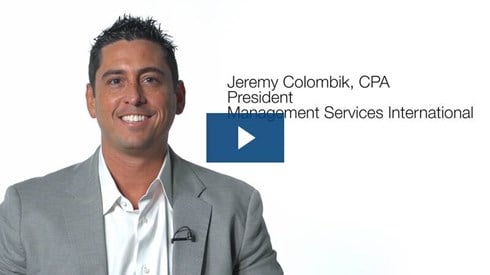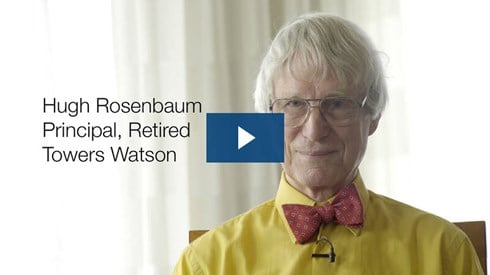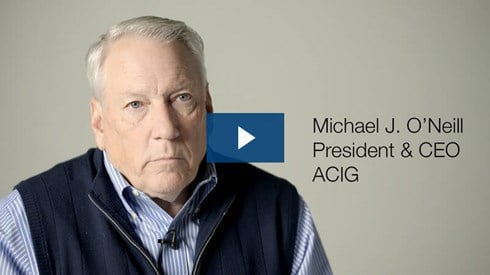What Are the Key Elements of a Captive Feasibility Study?


The captive laws in many domiciles require a prospective captive owner to submit a captive feasibility study as part of its license application. Even where a feasibility analysis is not legally required, prospective captive owners should complete a study to document how the captive will be used in managing the insured's risks.
What Is a Captive Feasibility Study?
A feasibility study is a study undertaken to determine whether a contemplated risk financing program is feasible for a particular organization or group of organizations.
A study, or a proposal for a captive feasibility study, should always begin by stating its scope and purpose. If the purpose is simply to fulfill a requirement that a captive submit a feasibility study as part of the application filing, the study will simply focus on what a regulator will need to review: the assumptions used in producing the captive's financial projection. The study becomes, in essence, a business plan, with actuarial support for the loss assumptions, a description of any reinsurance protection behind the captive, and an explanation of how the capital requirements of the selected domicile will be met.
However, there are other purposes for documenting the reasons for selecting captive insurance. Formation of an insurance subsidiary, or participation in a sponsored captive facility, puts the insured's capital at risk. Shareholders of the insured entity need to understand why their capital should be used to create underwriting capacity. The study needs to address the possibility that risk capital may be eroded as well as show how the value of the captive can be measured. This financial and risk management analysis provides the justification for transferring retained risk to a subsidiary or a sponsored captive, rather than financing risk using commercial insurance or a self-financing program. If the legitimacy or wisdom of the risk financing program is subsequently challenged, a well-written feasibility study can be invaluable in defending the captive program.
The focus of the study will depend on the motivating factors in undertaking the study, which typically fall into the following categories, known as the three "c's" of captives.
- Control
- Cost
- Capacity
The purpose of analyzing these three "c's" is to demonstrate whether the ingredients for captive success appear to exist. Captive organizers might still be sued if a captive later becomes insolvent, but if a study indicates that the motivation for the captive formation began with the desire for control, there was an appropriate focus on cost, and the intention was to build capacity, the organizers' motives are hard to challenge. The captive business plan should show how the control-cost-capacity objectives can be achieved.
Control
A feasibility study that does not begin by addressing whether a captive program can improve risk management control may not establish a solid business purpose for insuring risk in a captive.
The risks to be insured in the captive must be identified. It may be helpful to explain the elements of the risk and the size of the risk pool. A comparison of a captive program with the viable risk financing alternatives must be made.
Cost
The next part of the feasibility analysis should address cost. The study should explain any change in risk financing expenses and may include discussions of how the domicile choice impacts operating costs and the tax issues involved. The long-term financial impact of the proposed captive program should then be addressed. This will typically involve modeling after-tax cash flows under various loss scenarios and possibly under alternative program structures. The proposed program structure should reinforce the fact that the captive's policies will support the objective of improving risk management control.
Capacity
In most feasibility studies, capacity will be the final issue to be addressed. The discussion may focus either on building up surplus to improve retention capacity, maximizing the value of reinsurance, or access to contingent capital. The program's recommended structure will determine how the insured builds retention capacity, which requires an explanation of the accounting treatment of the captive business. The retention ability of the captive, the projection of expected loss costs, and the required amount of capital can then be reviewed, followed by the captive's financial projections under expected and adverse loss scenarios.
Insureds who commission a captive feasibility analysis are traditionally asked for the following items.
- Exposure values, current and projected (payroll, revenue, vehicles, property values, and locations)
- Five years' prior loss history (incurred or paid basis), by line of business
- Annual report or financial statements of insured
- Copies of current policies
- Premium and claims services payment schedule
This information is used to project expected loss costs for traditionally insured or self-insured risks and to identify potential coverage gaps. Using prior-years' loss history as the starting point for a feasibility analysis doesn't show what uninsured losses were incurred. But the captive feasibility study almost always needs to begin with the projection of expected loss costs for all traditionally insured or self-insured coverage. The study may then go on to analyze losses for the traditionally uninsured losses that are to be financed as part of an enterprise risk management project.
Two questions must always be addressed. First is the selected method of projecting losses; second, the rating methodology to be used in establishing premiums. The challenge in a feasibility study is to address these issues for the types of risks for which commercial insurance is not available, and/or where the insured does not have credible loss history that can be used to establish pure premium and expected incurred losses.
Parties Performing Feasibility Studies
Internal staff, insurance brokers, captive managers, or independent risk management consultants may perform feasibility studies. Each brings different strengths, weaknesses, and biases to the process.
- Internal staff members are most knowledgeable about the organization considering a captive insurer. When a risk management department performs a feasibility study, the costs are almost always lower than if an outside entity were to charge the organization for similar services. However, few internal staffs possess the time, expertise, familiarity with captive market conditions, and knowledge concerning captive service providers to effectively perform feasibility studies without at least some outside assistance. Risk managers who perform a feasibility study may be biased in favor of a "go" decision because establishing an insurance captive usually enhances the risk manager’s status within an organization.
- Insurance brokers often possess the expertise required to perform feasibility studies effectively. Brokers are often knowledgeable regarding market conditions and financing alternatives. Sometimes, they will perform captive feasibility studies for little or no charge. However, brokers cannot be expected to render truly unbiased opinions about the viability of a captive if they will ultimately be involved in operating or managing the captive if it is formed. A broker's objectivity might also be compromised if creation of the captive will cause it to lose commission income because a conventional insurance program will be terminated.
- Captive managers, because they are in the business of administering captives on a day-to-day and detail-by-detail basis, are uniquely qualified to assist firms that are considering the captive insurance alternative. However, they tend to be biased toward a "go" as opposed to a "no go" recommendation in a feasibility study. This is especially true if they will ultimately manage the captive insurer after it is formed. They also may be biased toward recommending captive insurance domiciles where they maintain offices.
- Independent risk management consultants who specialize in captive feasibility studies can be highly effective in assessing the potential viability of a proposed captive. However, the most experienced consultants usually charge substantial fees. Less costly consulting firms might not be as knowledgeable or offer the same quality work. Some might even use generic "off-the-shelf" reports that fail to address an insured's specific problems. Independent consultants might also be inclined toward a "go" decision if formation of the insurance captive presents the possibility of additional consulting engagements.
At the outset of a feasibility study, insureds should consider advising the entity performing the analysis that it will not manage the captive in the event it is created. This helps to assure that the broker, manager, or consultant has no stake in either recommendation, thereby assuring the most unbiased assessment possible.
A careful examination of the experience (with all aspects of risk financing, not just captives) of the individuals who will actually do the work, and of references, should be performed. One of the best methods of identifying qualified firms for work of this nature is to ask trusted counterparts in trade associations or professional societies. Usually, risk managers and other professionals are more than happy to discuss their experiences with firms that they have used for similar projects.
This article is based on information in Chapter 11 of Captives and the Management of Risk, Third Edition, by Kathryn A. Westover, and section IV of Risk Financing, both published by International Risk Management Institute, Inc., Dallas, TX.


